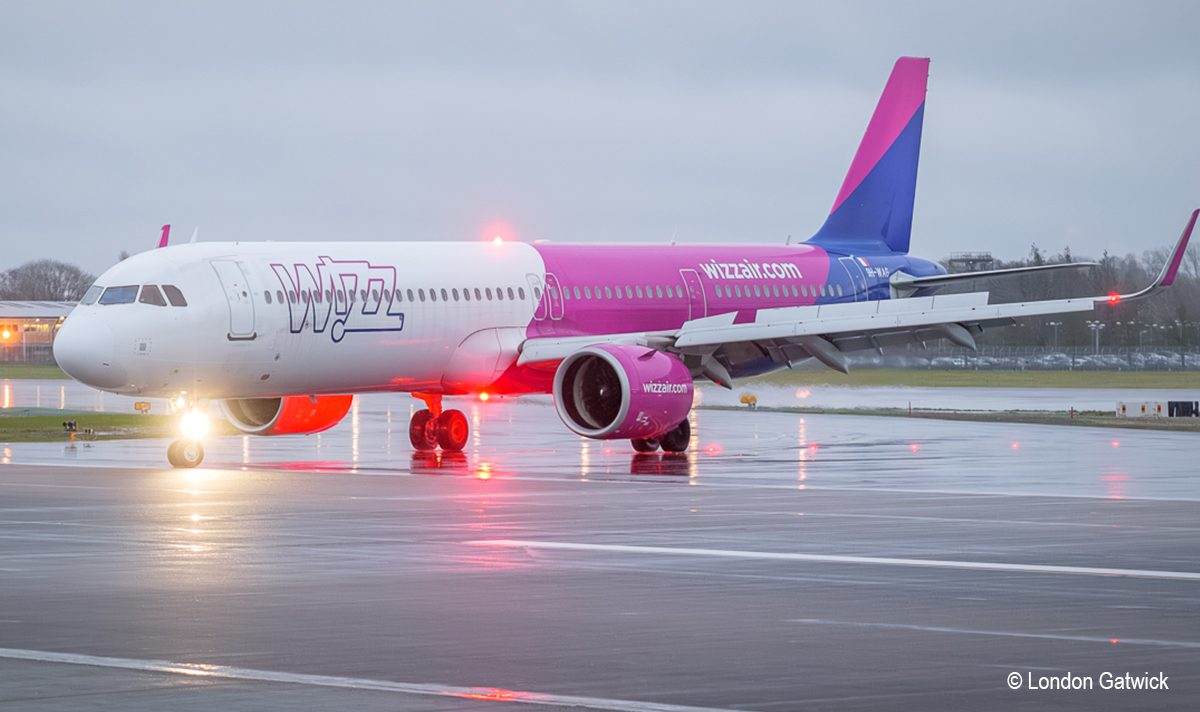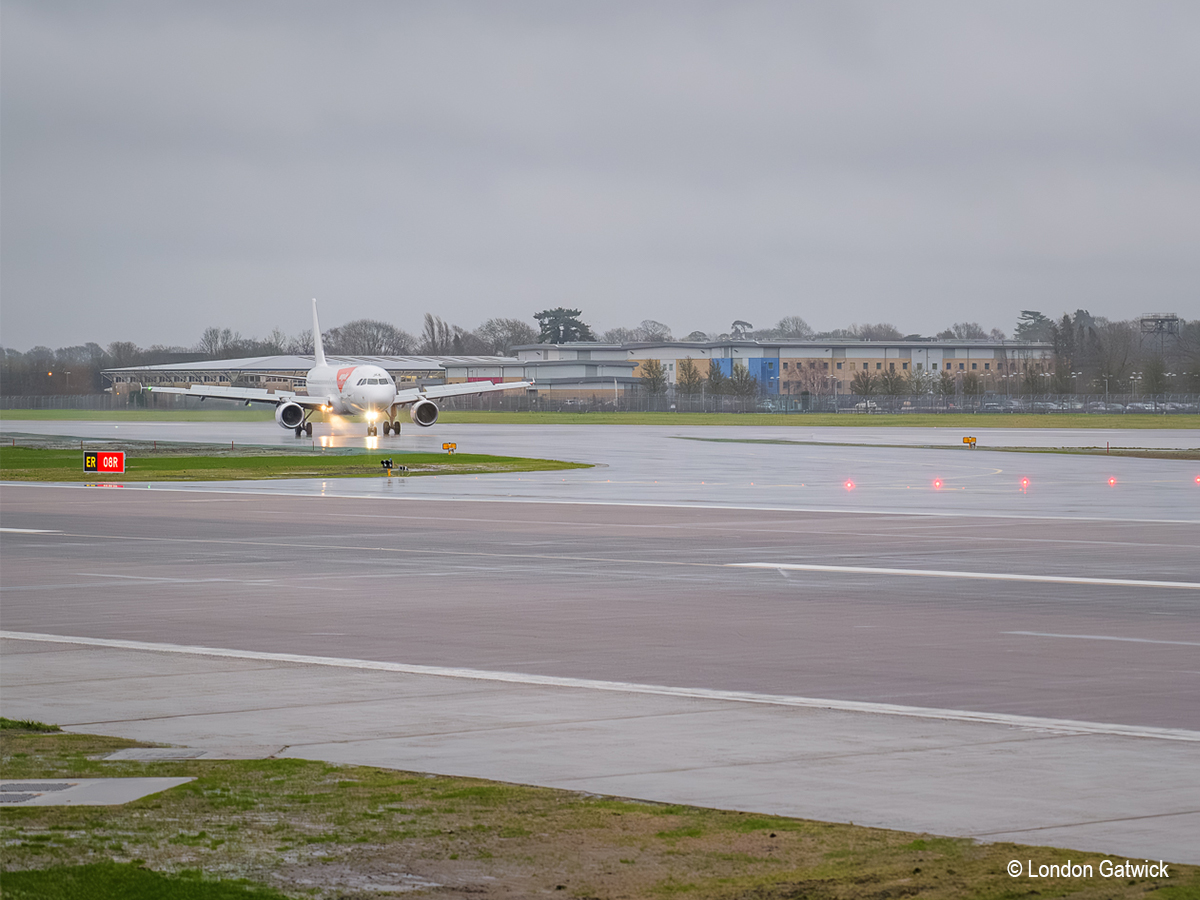 In 2016, Think was awarded a contract by Gatwick Airport Ltd (GAL) to support the development and validation of the ATM masterplan to improve operational resilience over the coming 10 years. Part of this included provision for an additional rapid exit taxiway (RET) between the first two exits on London Gatwick’s runway in the westerly direction to reduce runway occupancy time.
In 2016, Think was awarded a contract by Gatwick Airport Ltd (GAL) to support the development and validation of the ATM masterplan to improve operational resilience over the coming 10 years. Part of this included provision for an additional rapid exit taxiway (RET) between the first two exits on London Gatwick’s runway in the westerly direction to reduce runway occupancy time.
Out of those existing exits, Echo was a very old design not suited for rapid exit while Foxtrot Romeo, albeit an efficient design, was a considerable distance from the landing threshold. As a result, both existing exits had similar runway occupancy performance.
As a solution to this, the idea of building Echo Romeo – an exit with an efficient design closer to the landing runway threshold – was developed to capture the best of both worlds. Think was tasked with demonstrating the proposed change would improve runway performance and boost operational resilience.
The challenge
At first glance this should be a simple measurement – it takes x seconds for the aircraft to clear the runway and therefore it will always take x seconds consistently. The reality is much more complex. Runway occupancy is very variable and difficult to pick apart. If runway occupancy is measured flight-by-flight over a period of time it is amazing how much variability exists even for the same aircraft type. This is because runway occupancy is influenced by a wide range of factors including:
- Aircraft type.
- Operator.
- Pilot.
- Wind.
- Runway infrastructure and procedures.
- Location of the terminal relative to the exits.
- Surface conditions, i.e. dry / wet.
Runway performance is driven by the outliers and not the simple averages. Our analysis needed more sophistication than a simple back of the envelope calculation. We developed a model that used real world operational data to predict the runway occupancy for aircraft taking the new exit, estimate the likelihood of an aircraft taking the new exit and translate this new runway occupancy distribution into a delivered arrival spacing.
Our proposal
Think proposed an enhancement of the speed profile defined in the ICAO design guidance for rapid exits. Next up an operational dataset was needed. The catch was existing data points gathered at the airport did not align directly with Think’s proposed speed profile model. To overcome this, Think updated the airport measurement infrastructure to produce a custom dataset during the summer of 2016. This dataset combined with Think’s runway performance model was used to measure the baseline runway performance (i.e. use the data exactly as it was measured) as well as produce various future scenarios for different runway exit configurations.
For the future scenarios predicting the future runway occupancy distribution was important but not the full story. Improved operational resilience can only be achieved if spacing between arrival aircraft is improved. If the outliers in runway occupancy are not changed but arrival spacing is reduced, go around rate would increase unacceptably. Think developed a methodology to translate change in runway occupancy to change in arrival spacing while indirectly showing go around rate would be unaffected. The result demonstrated improvements in runway performance in the westerly direction were possible. Later, in 2019, further scenario modelling was conducted as the Echo Romeo design was iterated and finalised ready for construction. Building of the RET commenced in 2020 but due to the COVID pandemic construction was put on hold. When the new key airport stakeholders were ready to pick up the project again, Think were able to efficiently get them back up to speed with the work we delivered several years prior and demonstrate that it was still relevant in the current environment.
 The Echo Romeo RET was brought into live operation in its initial configuration in early 2024. It has been in operation for over six months including during the busy summer months and is already delivering results with improved runway occupancy.
The Echo Romeo RET was brought into live operation in its initial configuration in early 2024. It has been in operation for over six months including during the busy summer months and is already delivering results with improved runway occupancy.
Echo Romeo has been a success story for all involved. Think is proud to have been involved at the very beginning of this journey taking an idea from a simple suggestion through to proven real world benefits. It is very fulfilling watching aircraft using a runway exit you helped validate.
Think is involved in projects throughout the life cycle from R&D through to operational deployment. With any new idea the ultimate test is the real world. Reality in ATC is very unforgiving if you have not done your due diligence. Think takes great pride in doing the right work to a high quality to achieve the goal of improving ATC operations.
Get in touch with the team to find out more: info@think.aero

Author: Peter Weeks, Principal Consultant


Recent Comments